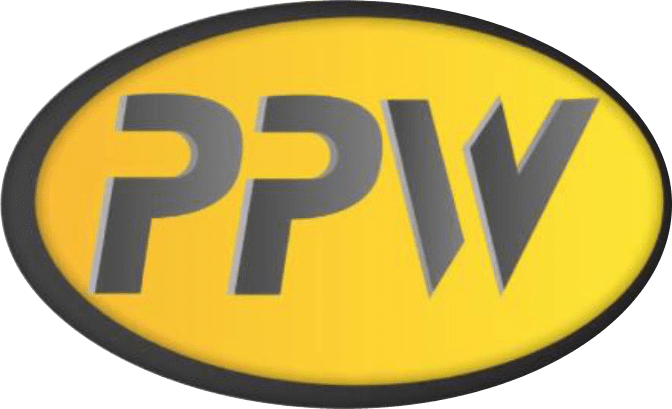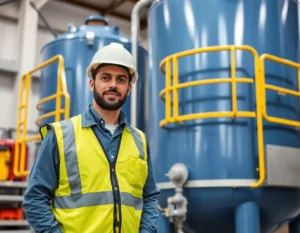Introduction
In the world of metal fabrication, where precision and quality are paramount, choosing the right type of welding is a critical step. Have you ever wondered what type of welding is used to join metals? If that is the case, this article will guide you through the different types of welding, highlighting how and when each is used, and offering tips for selecting the most suitable method for your projects.
What type of welding is used to join metals?
When addressing the question of what type of welding is used to join metals, it is essential to recognize the various methods available, each with its unique characteristics and specific applications. In this section, we will explore the main types of welding, providing an overview of their uses and advantages:
- Arc Welding (SMAW)
Description: It uses a coated electrode that melts to form the weld. It is one of the most traditional and versatile techniques.
Common Uses: Widely used in structural construction, repairs and in jobs where portability is required.
- TIG welding (GTAW)
Description: It uses a non-consumable tungsten electrode and an inert gas to protect the weld area from oxygen and other gases.
Common Uses: Ideal for joining thin, non-ferrous metals such as aluminum, used in applications requiring high precision welding.
- MIG/MAG welding (GMAW)
Description: It uses a consumable wire electrode and a shielding gas. It is known for its efficiency and producing clean welds.
Common Uses: Popular in industrial and automotive manufacturing, especially in jobs that require rapid, continuous production.
- Gas Welding (Oxyacetylene)
Description: It combines oxygen and acetylene to create a flame capable of melting metals. Allows detailed control of the heat applied.
Common Uses: Used in repair work, metal art and in applications requiring precise control of the weld.
- Laser Welding
Description: Use a high intensity laser to melt the metals. Offers extremely high precision and control.
Common Uses: Applied in precision manufacturing, especially in the electronics industry and in jobs that require detailed soldering.
Analyzing what type of welding there is involves understanding these differences and applying the most appropriate method according to the specific needs of the project. Each type has its own advantages and limitations, making its selection a crucial step in any welding job.
Weld Selection According to Metal Type
Choosing the correct welding technique is essential to ensure the quality and durability of any metallurgical project. When asking “what type of welding is there” for a specific metal, we must consider the unique properties of each metal and how they interact with different welding methods. Below we provide some key tips for choosing the most suitable welding method depending on the type of metal:
Carbon Steel Welding
Tips: Arc welding (SMAW) and MIG (GMAW) are commonly used for carbon steel, offering good penetration and effective quality control.
Considerations: Choose electrodes or wires that complement the composition of the carbon steel to avoid corrosion problems or weakness in the joint.
Stainless Steel Welding
Tips: TIG welding (GTAW) is ideal for stainless steel due to its ability to handle heat and minimize warping.
Considerations: It is important to use an appropriate shielding gas and a filler material that matches the composition of the stainless steel.
Aluminum Welding
Tips: TIG and MIG welding are effective for aluminum, although they require some experience due to the material's thermal conductivity.
Considerations: Use an electrode or wire that is compatible with the type of aluminum and pay attention to the cleanliness of the material, since aluminum is susceptible to contamination.
Welding Non-Ferrous Metals (such as copper and titanium)
Tips: TIG welding is commonly recommended for these metals, providing precise control and superior weld quality.
Considerations: These metals may require specific parameters and advanced welding techniques, as well as a controlled welding environment.
When considering what type of welding is available for different metals, it is crucial to consider not only the compatibility of the welding process, but also the specific project requirements and material properties. A proper choice of welding method will ensure the integrity and longevity of the metal joint.
Factors to Consider When Choosing Welding
When answering the question “what type of welding is there” for a specific project, there are several critical factors that must be considered to ensure the most appropriate method is chosen. These factors ensure not only a successful weld, but also one that is safe, durable and suitable for the purpose of the project. Below, we highlight the most important aspects:
Type of material: The nature of the material is essential when considering “what type of weld there is.” Different metals require different welding techniques, with specific considerations for each.
Material Thickness: The thickness of the material will influence the choice of welding method. Thicker materials may require higher penetration welding methods, such as arc welding.
Welding Position: Some methods are more suitable for certain welding positions. For example, TIG welding may be preferable for more complicated positions.
Board Requirements: The strength and appearance of the joint are key factors. When analyzing “what type of weld there is”, consider whether the joint will be subjected to high loads or if the aesthetic finish is important.
Welder Capacity and Experience: Some welding methods require more skill and experience. The choice must be aligned with the welder's ability to ensure effective application.
Available Equipment: The type of equipment available can also determine "what type of welding" can be performed. Some techniques require specific machinery or advanced configurations.
Environmental conditions: The conditions under which welding will be performed, such as exposure to external elements or available ventilation, can influence the choice of welding method.
Considering these factors will help make an informed decision about “what type of welding” to use, ensuring that the method selected is best suited for the specific needs of the project.
Advantages of Welding in Metal Manufacturing
Welding is an integral component in metal manufacturing, offering numerous advantages that are fundamental to the construction and design of a wide range of products. When considering “what kind of welding is there” for a project, it is important to highlight how different methods can benefit the metal fabrication process. Advantages include:
Versatility in Materials and Designs
Welding provides the flexibility to work with a variety of metals and alloys, allowing for complex, custom designs. This is crucial, since “what type of weld there is” can vary depending on the material.
Strength and Durability: Proper welding methods create extremely strong joints, often stronger than the materials themselves. This strength is essential in the manufacture of metal structures and components.
Production Efficiency: Many welding methods, especially automated ones, increase production efficiency. When deciding “what type of welding” for a project, efficiency is an important factor to consider.
Efectivity cost: Welding can be a more cost-effective option compared to other joining methods, especially when speed and material reduction are taken into account.
Manufacturing Precision: Advanced welding techniques allow for incredible precision, which is vital in applications where precision is critical. Choosing which type of welding is suitable guarantees this precision.
Adaptability and Personalization
Welding allows for adaptations and customizations during the manufacturing process, which is especially valuable in bespoke or specialized projects.
These advantages highlight the importance of correctly choosing “what type of welding” for a specific project. Proper selection not only impacts the quality and efficiency of the manufacturing process, but also ensures that the final product meets all requirements and expectations.
Explore Our Expert Welding Services
Do you wonder "what kind of welding "Is there" for your next project? In PPW, we are experts in offering solutions welding tailored to fit perfectly to your specific needs.
Visit our services page welding to find out how we can help you take your projects to the next level.



